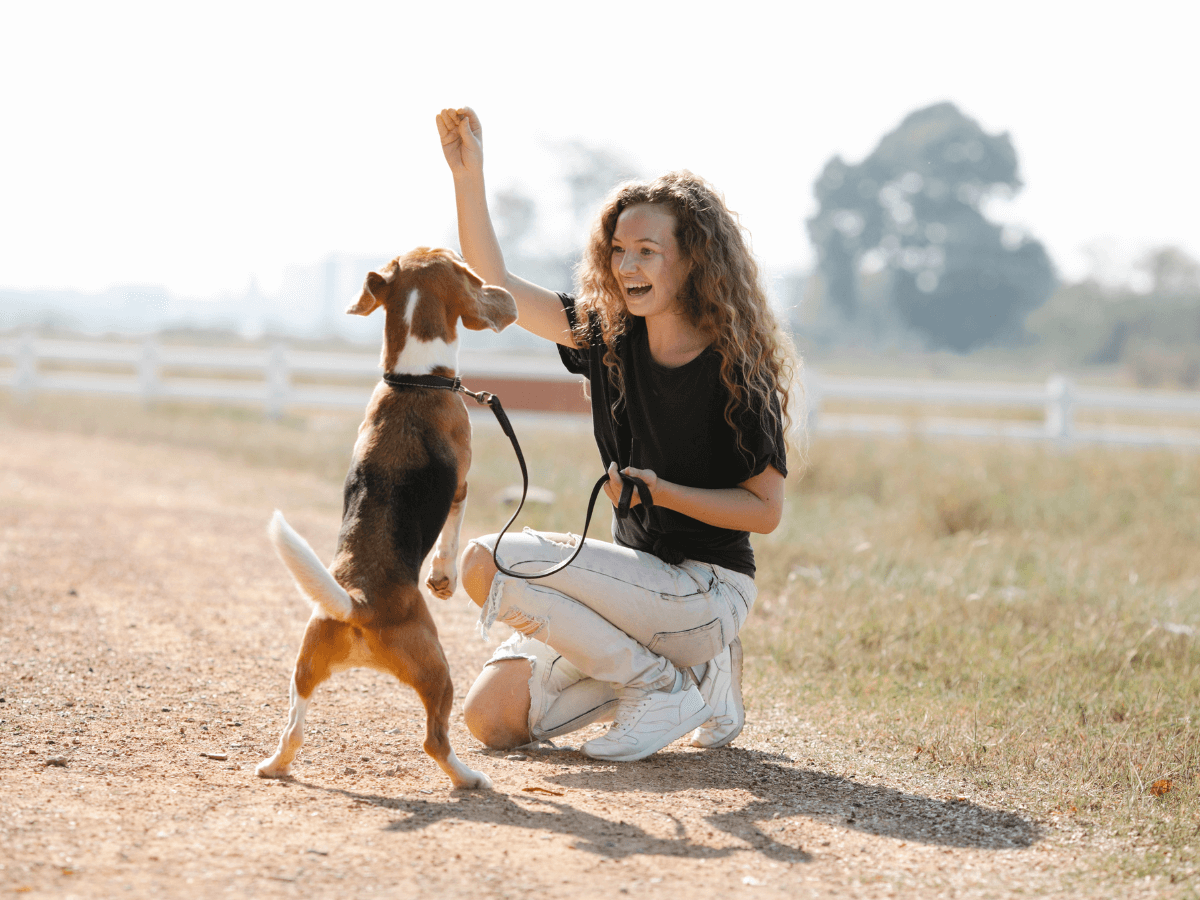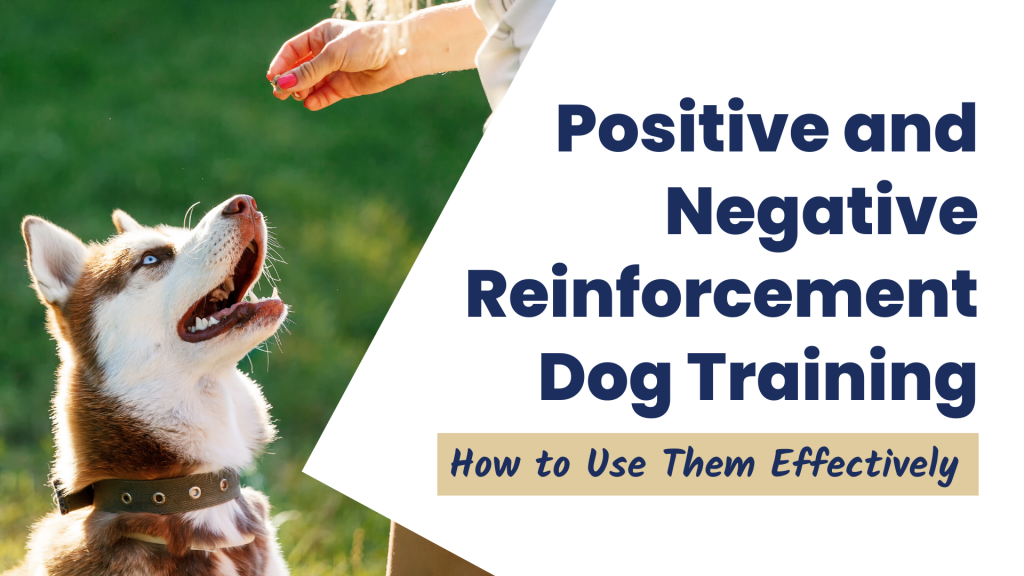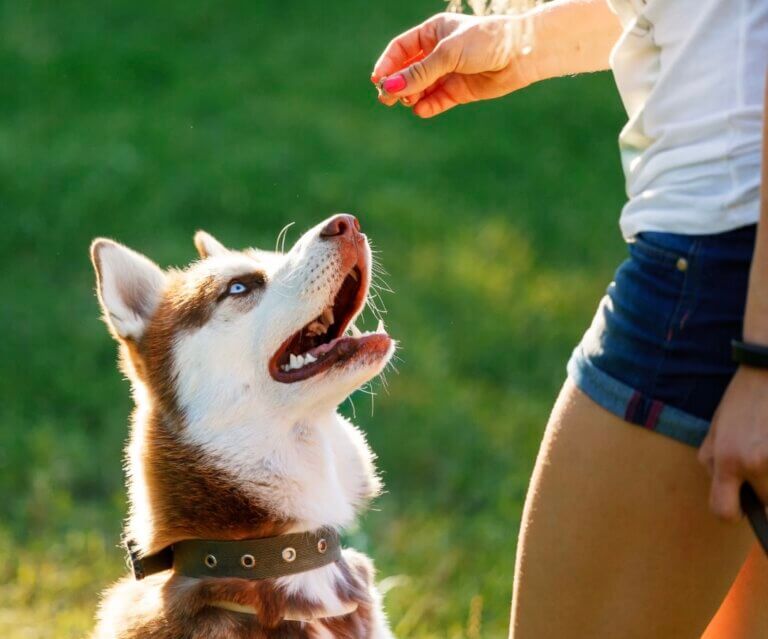Listen, we’ve all been there.
See, positive and negative reinforcement are two completely different things.
In this blog post, we’ll explore positive and negative reinforcement dog training methods.
We’ll also touch on what makes a good dog trainer and when to seek professional help with your dog’s training.
The Difference Between Positive and Negative Reinforcement Dog Training
Positive reinforcement is defined as “the encouragement of desired behaviour by offering a positive consequence.”
This could be treats, petting, or verbal praise.
On the other hand, negative reinforcement is “the encouragement of desired behaviour by removing an unpleasant condition.”
In a nutshell, this means taking away something your dog doesn’t like after performing the desired behaviour.
The goal is also to increase the chances of your dog repeating the behaviour.
How To Use Positive Reinforcement In Dog Training Routines

Now that we know the difference between positive and negative reinforcement…
As mentioned, positive reinforcement is adding something positive after your dog performs the desired behaviour.
Furthermore, positive reinforcement is a great way to build a bond between you and your dog.
The most common positive reinforcement is giving your dog a treat.
The key is to find what motivates your dog and use it to your advantage.
If your dog doesn’t seem to care about treats, try using petting or verbal praise instead.
Because if you only give your dog a treat sometimes, he may not understand that he is being rewarded for his behaviour.
For example, when it comes to potty training, you can use positive reinforcement to teach your dog to go potty outside.
Eventually, they’ll make the connection that going potty outside is what gets them the reward.
Remember, the goal is to make your dog repeat whatever behaviour you’re trying to encourage.
Tips for Using Negative Reinforcement Effectively
Now let’s talk about how you can use negative reinforcement.
Some of the examples include stopping a training session when your dog is behaving well or taking them for a walk after they’ve been good.
However, it’s important to use negative reinforcement sparingly.
This will effectively nullify the positive reinforcement you’re trying to achieve.
For example, if you’re trying to train your dog to stay off the couch, using negative reinforcement would involve saying “no” and removing them from the couch whenever they get on it.
As you can see, it’s essential to know the difference between positive and negative reinforcement to use them correctly.
You see, both positive and negative reinforcement can be extremely effective in different situations.
It is because it’s a great way to get your dog to understand what you want them to do.
On the other hand, negative reinforcement is often used to extinguish behaviours you don’t want. This could be things like barking, chewing, or jumping up on people.
Although there are situations where negative reinforcement may be more effective, it should only be used as a last resort or if you are guided by a professional trainer.
If you’re not sure which type of reinforcement to use, positive reinforcement is always a good place to start!
What Makes A Good Dog Trainer?

As a dog owner, it is vital to be able to train your dog effectively.
Either way, there are certain qualities that make a good dog trainer.
For example, if you were to become a dog trainer yourself, it would be cheaper and you would have a better bond with your dog since you’re the one training them.
However, becoming a good dog trainer takes a lot of time and patience.
We’ve mentioned earlier what these qualities are.
So great trainers know exactly that it takes time for dogs to learn new things.
Patience is key when training a dog because if you get frustrated, your dog will sense it, and the training session will be less effective.
This positive attitude will be contagious and can help your dog stay motivated during training.
Next is being consistent. It means having the same energy and enthusiasm for training every single day.
If you’re inconsistent with your training, your dog will get confused, and the whole process will take longer.
Last but not least, good dog trainers must have a lot of knowledge about dogs.
Conclusion
The goal of both positive and negative reinforcement is to increase the chances of your dog repeating the desired behaviour.
Again, it is best to seek professional help if you are unsure.
Getting guidance from a professional with the right qualities will help you get great results and make training your dog a fun process for both of you.

That’s a wrap!
We hope you found this blog post helpful.

